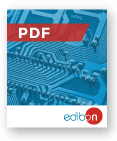
NOVO Folheto de Energias Renováveis
Com a nossa vasta gama de produtos de Energias Renováveis, da EDIBON, respondemos às necessidades de formação para o estudo da área de uma forma simples e prática.
BaixarEnergias renováveis são fontes de energia limpas, ilimitadas e cada vez mais competitivas. São fontes de energia baseadas na utilização de recursos naturais: sun, vento, água ou vegetal ou animal biomassa. Diferem de combustíveis fósseis principalmente na sua diversidade, abundância e potencial de utilização em qualquer parte do planeta, mas especialmente no facto de não produzirem gases com efeito de estufa.
Ver maisGraças ao desenvolvimento de energias renováveis, é possível combater alterações climáticas e evitar o seu impacto devastador. aquecimento global devido a gases com efeito de estufa é um facto e é por isso que um dos objectivos estabelecidos pela Nações Unidas é alcançar o acesso universal à electricidade até 2030.
Existem vários tipos de energia renovável tal como energia eólica, energia fotovoltaica, energia hídrica, biomassa e biogás, energia geotérmica, energia das marés, energia das ondas, bioetanol e biodiesel.
Dada a importância de energias renováveis, as suas principais vantagens devem ser realçadas: não emitem gases com efeito de estufa, são inesgotáveis e menos e menos dispendiosas, reduzem dependência energética, e têm um horizonte político favorável.
Devem à proliferação de energias renováveis e a necessidade de criar sistemas de potência mais eficientes e flexíveis, geração descentralizada está a tornar-se cada vez mais popular. Esta é a origem do conceito Micro-Grids. São sistemas de geração de energia bidireccional, baseados principalmente em energias renováveis, que distribuem electricidade de vários pontos de geração de energia aos consumidores através de tecnologia digital e favorecendo a integração de energias renováveis.
Alguns agradecimentos a este evolução tecnológica que deu origem a energias renováveis e à sua descentralização, foi possível integrar o veículo eléctrico na sociedade de hoje. Por sua vez, isto reduziu significativamente gases com efeito de estufa (CO2) e custos e aumentou a fiabilidade do sistema eléctrico.
Ver produtos